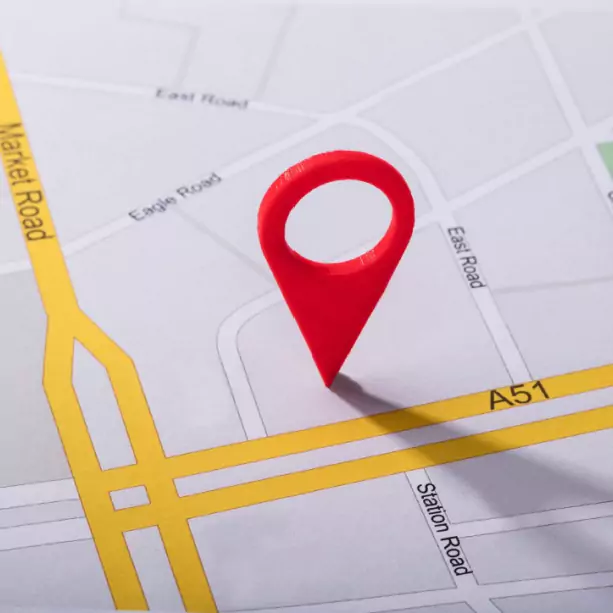Apple launched the AirTag in 2021, and since then, these tracking tags have been very popular among consumers. They are helpful for keeping track of simple items, such as wallets and keys. But what goes into the technology behind these tags? And can they be used at an enterprise level?
What Technology Does AirTag Use?
AirTags combine two popular technologies: Ultra-Wideband (UWB) for location tracking and Bluetooth for communication within the Find My app. Bluetooth is the most common radio technology found in asset tracking solutions. It is relatively energy-efficient and can provide an approximate location within a 100 ft range. However, it is not as accurate as UWB. When using UWB, the AirTag offers location accuracy of 20-30cm. This precision is great for tracking items such as wallets, keys, backpacks, purses, and laptops. Unfortunately, UWB is very power hungry.
How Does AirTag Send Location?
Criteria for using an AirTag:
Anyone who wants to use an AirTag must first have an iPhone or iPad and have the Find My app, which is only available for Apple products. Without those two things, the AirTag will never work or connect for location services.
Ultra-Wideband:
The initial technology that the AirTag relies on for location is Ultra-Wideband. The AirTag uses UWB to determine if the tag is within its range of 30 to 40 ft. If the consumer is within 12 ft. of the tag, it will provide a precise location of the item. This accuracy is a result of the radio frequency at which UWB operates. Most frequencies for asset trackers use a radio frequency of 2.4 GHz or 5 GHz, and the saturation of devices operating on these frequencies allows the chance of tracking interference. UWB, however, operates on a frequency of 500MHz. Devices that use UWB send out a ping once every other nanosecond.
This repetition, as well as the width of the frequency, allows for greater data transfer and gives a more accurate location in real-time. So whenever the consumer is within 40 ft. of the tag, they can press the location button on the Find My app, and the AirTag will send out the UWB frequency. If the consumer has a newer iPhone that is UWB-enabled, it will receive that communication and will respond in order to find the precise location. The formula used to determine the distance of the lost object is the time of flight (how long it takes the message to reach the receiver) minus the time of reply (how long it takes to respond) divided by two.
The Find My app will take the result of this formula to present to the consumer a precise location of their missing item. Once again, this technology can be very helpful in situations where the consumer is close by and just looking for the exact location of the item, but it is not good for longer distances. One other drawback about UWB is how it performs when facing barriers such as walls. While it is true that UWB will not interfere with other trackers because of the different radio frequencies, it may not perform to the desired standard when asked to transmit through walls. Due to this weakness, the best application for UWB would be for items that will be within line of sight.
Join the AirFinder Difference!
- Innovation. Organizations can be freed up to innovate and bring more impactful products and services to market.
- Profitability. Increased profitability provides new opportunities to innovate and improve valuation.
- Digital Transformation. Discover competitive advantages, new revenue opportunities, improved customer relationships, and increased efficiency.
If the consumer is not within range of the UWB’s frequency, it will switch to Bluetooth. The Bluetooth feature operates on a parasitic positioning system, meaning that it feeds off of other devices. When you press the find button on your Find My app, the AirTag will send out a ping to help your phone’s system locate it. The AirTag location system runs on Apple’s very own IOs platform, and they utilize this platform to provide a wide range for locating the tag. So when the AirTag sends out the ping, it can be picked up by other iPhones within 30 to 40 ft. of the AirTag. Those phones then send their location to the ios platform which then sends that location to the AirTag owner.
This reliance on other nearby devices is why it is called a “parasitic positioning system.” This provides a great range for the tracker due to the saturation of iPhones in the world. With this great potential, there is also great risk, such as if someone leaves an object in an area that does not experience any traffic. Without a flow of nearby iPhones, the tag will never be able to communicate its location, and therefore never alert the owner. As far as accuracy, the Bluetooth does not provide the best accuracy, but merely gives a general area of where the device is located. This area could range as much as up to a 30 ft. radius.
Is AirTag an Effective Solution for Enterprises?
The AirTag is an ideal solution for consumer use. AirTags give peace of mind to an individual who wants to track items that tend to go missing, but is this an effective solution for businesses interested in asset tracking? For most businesses, this solution is not optimal for performance or affordability. Link Labs provides an enterprise asset tracking solution to help enterprises track and manage items indoors, outdoors, and on the road. If you are interested in asset tracking for commercial use and want to learn more about what Link Labs has to offer, book a demo today.






